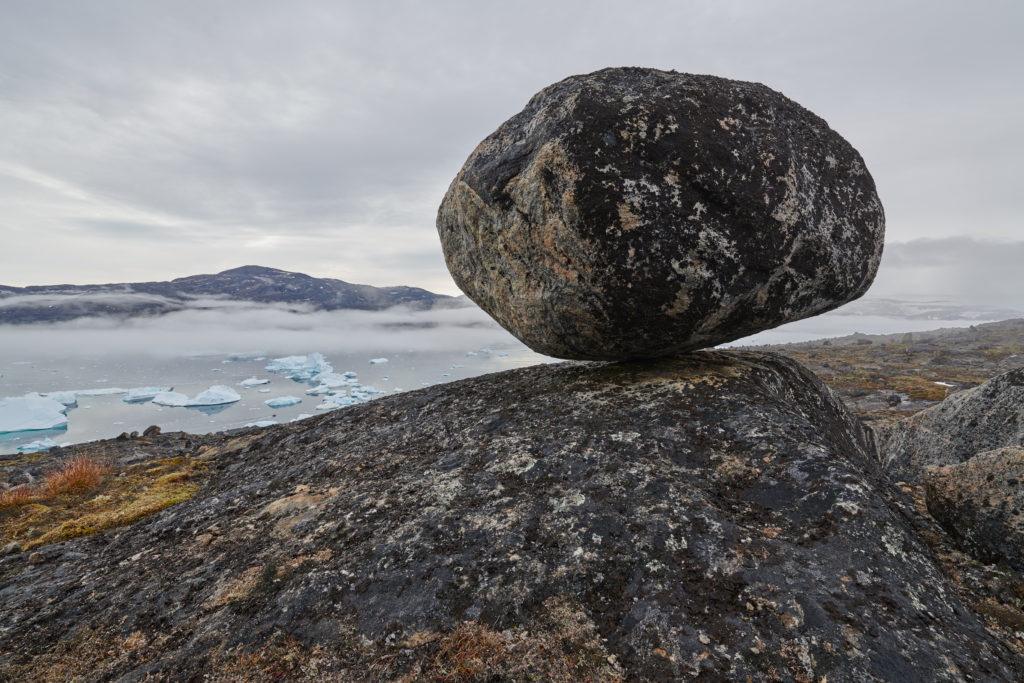
Balancing rock: Kollorsuaq, Greenland, 16 mm, f/8, stack of 6 images
I’m back from an expedition cruise to the Baffin Bay high up in the Arctic between Canada and Greenland, a trip that brought me back to the roots as a landscape photographer.
Landscapes have been my exclusive subjects for more than 20 years when shooting film with a 4×5 view camera. Landscapes require detail. A beautiful scene, matching light (there is no such thing as bad light as everything boils down to finding a subject that matches the light), a solid composition, and exceptional detail in both the shadows and the highlights can create another level of viewing pleasure; the finished print revealing more detail than was perceivable with the naked eye.
In a certain sense the landscape images of this post are stacked with a large amount of detail that can only be rendered on the final images when everything is in sharp focus and when viewed as a fine print. A screen shot of a highly compressed jpeg cannot do it justice. But what I want to discuss here is the technique of focus stacking applied to landscape images; click here for an introduction to the technique.
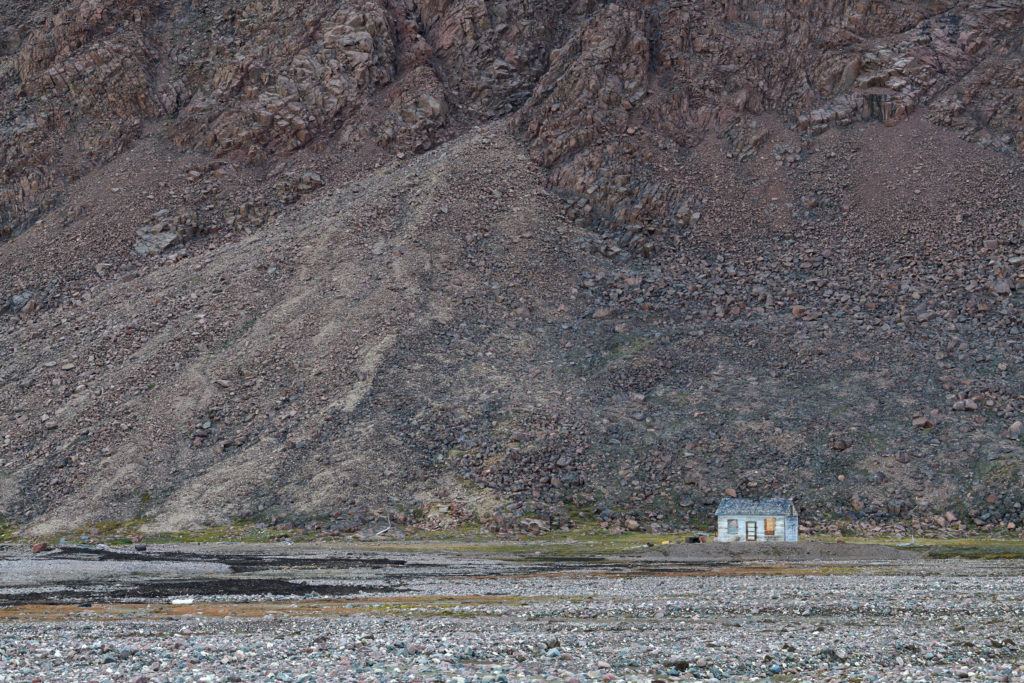
Cabin: Craig Harbour, Canada, 78 mm, f/5.6, stack of 4 images
Possibly the best DSLR for shooting landscapes is the Nikon D850 mounted on a sturdy tripod, recording 14-bit uncompressed NEFs, and using the lenses at apertures 5.6 or 8, which is a good trade-off between edge sharpness and diffraction. The camera’s 45 megapixels yield a native 27.5″ wide (a bit larger than A2) print at 300 dpi, which is still not wall sized, but a good compromise. First, the wall space in my average-sized home is limited and the amount of gear that I can carry into the field has steadily decreased over the years.
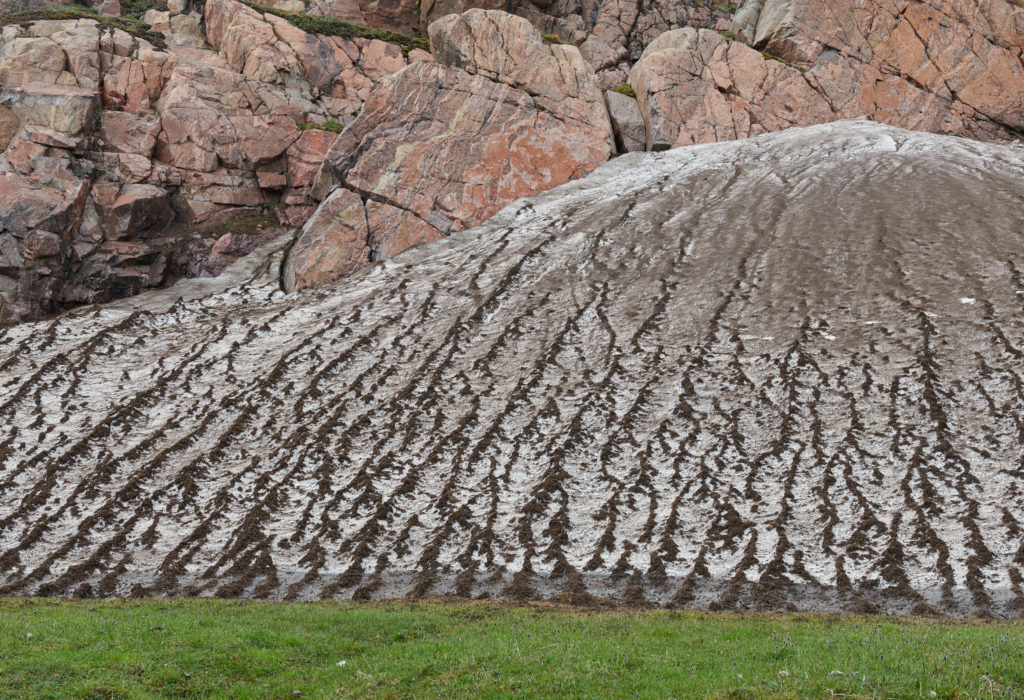
Snowfield: Etha, Greenland, 60 mm, f/5.6, stack of 14 images
Of course, if you shoot scenes from a roadside this doesn’t matter but I still find myself hauling too much gear: The D850 mounted on an L-bracket, a heavy tripod (in particular when expecting gusty winds) plus the “holy trinity” of f/2.8 Nikon zoom lenses: the 14-24, the 24-70 (as the least satisfactory of the three), and the excellent 70-200. Added to this is a spare body for the occasion when changing lenses isn’t possible, for example, when riding in a zodiac. Not to forget the other junk: spare batteries, chargers, connection cables and power adapters, dongles, card readers, sensor cleaning kit etc.
The biggest improvements of the D850 with respect to the D810 (next to some handling features) are the better implementation of the electronic first curtain (EFC) and the fully electronic shutter (denoted as quiet and silent shooting modes, respectively). What’s the difference? The handbook description of the electronic shutter options combines aspects that do not have any value together: “when capturing a night sky blanketed with stars, you probably want to avoid even the tiniest image blur to maximize the advantage of 45 megapixels”. But, at 20-30 seconds exposure time, shutter shock is the least to worry about. I had to take off the lens and look inside the mirror box to understand what the camera is actually doing. The EFC only works in the Q (quiet) and MuP (Mirror Up) modes and not, by default, with the exposure delay mode (even when enabled in the menu). On the D810 it is worse; using live view with a hood lope, you must use the MuP mode and press the shutter twice to avoid the mirror flapping down and up (and down again). This reduces shutter shock but feels awkward when shooting hand-held.
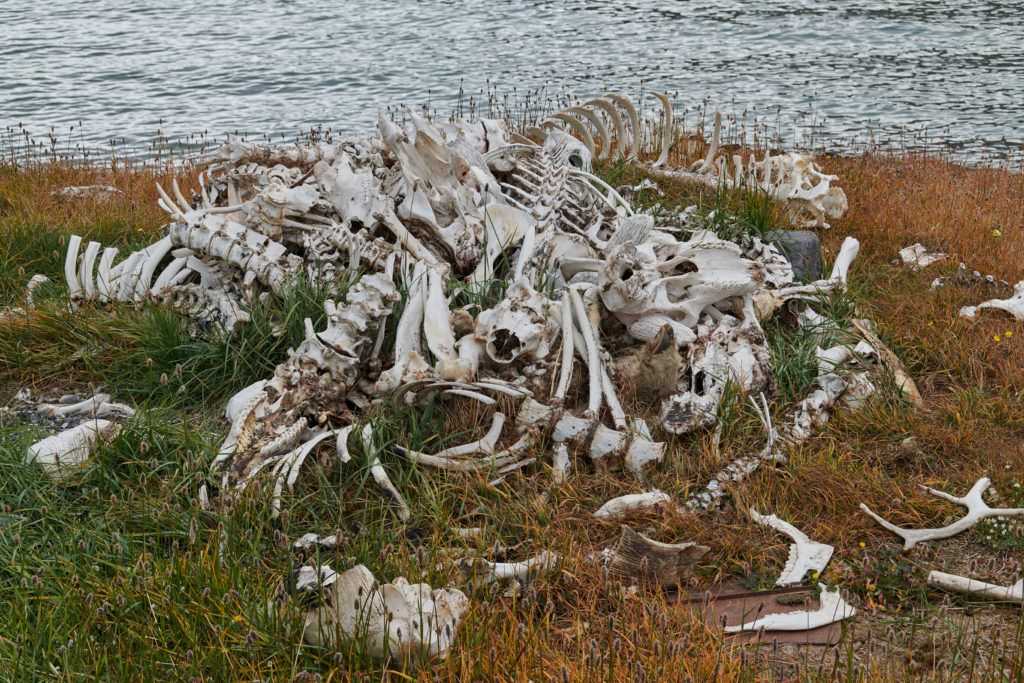
Bones: Etha, Greenland, 70 mm, f/5.6, stack of 21 images
Fully electronic shutter (silent shooting) works on the D850 in live view only, although there is no compelling technical reason why this cannot be combined with the MuP mode and a shutter delay when shooting from a tripod. When enabling the silent shooting mode, you have the choices between SL1 and SL2. The camera menu gives no hint to what the difference is; with SL1 you can shoot full-res photos up to 6 fps while SL2 switches to DX mode with burst rates up to 30 fps at jpeg medium resolution; a useless option, IMHO. Burst rates of 30 fps make sense only for action, but this is precisely where a fully electronic shutter is problematic (creating what is known as rolling shutter artefacts due to the about 200 milliseconds that are required to read-out the sensor).
The most useful feature used for all the images of this blog is the focus stack mode (denoted, in an abuse of notating, focus-shift shooting). Focus-shift is an undesirable feature of the lens, i.e., the actual focus plane moving outward when the lens is stopped down during the shot. Another undesirable lens design feature is curvature of field, i.e. the lens focusing at different distances for off-axis subjects. I have found the Sigma Art lenses to be notorious in this respect. Both effects are mitigated by focus stacking because the focus plane is racked through the scene from the nearest point until the end-stop of the lens, which is slightly beyond infinity for the Nikon zoom lenses.
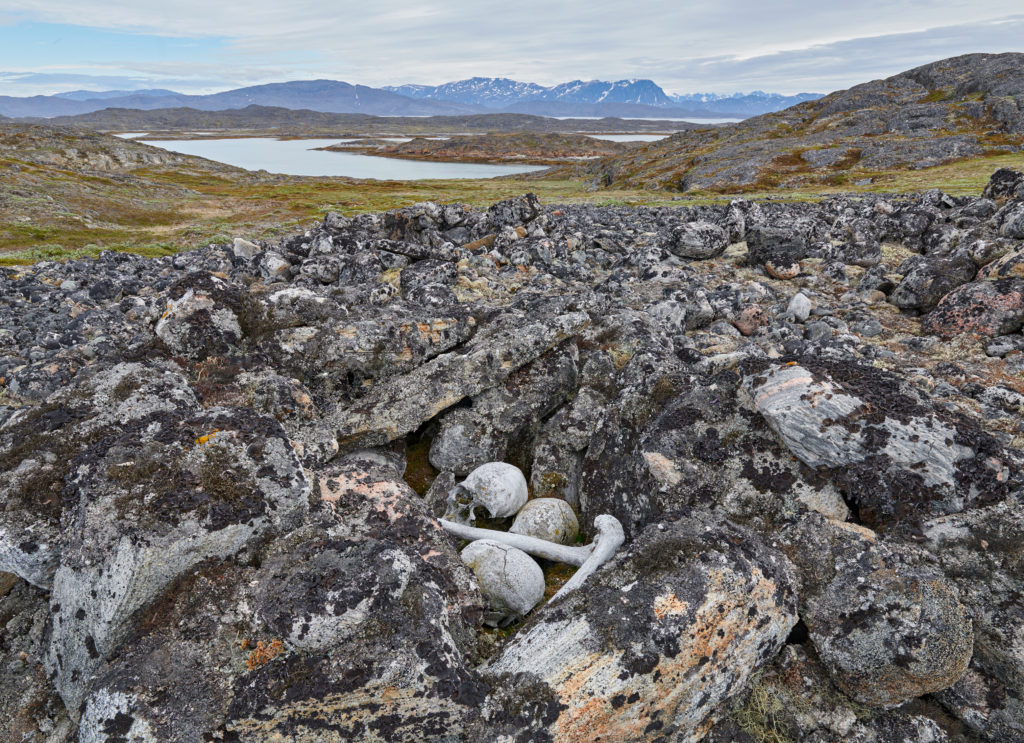
Grave: Nipisat, Greenland, 17 mm, f/8, stack of 8 images
The user manual doesn’t explain much the role of the settings in focus-shift mode. As the focus-stack process racks the lens beyond infinity and stops the recording there, it is appropriate to set the maximum number of shots to 50. The step widths must be set to the smallest value to avoid depth-of-field waviness in the final stack. I don’t know why you should take any risk for the sake of saving some megabytes on the SD or SQD card.
I always initiated the stacking process from live view with the fully electronic shutter enabled. In any case, focus stacking is not for moving subjects, so rolling-shutter artefacts are not a concern. The exposure smoothing option is buggy, so I recommend to have this disabled. Choosing an initial shutter delay of 3 seconds avoids connecting a cable release. The D850 provides the option to store the recorded stack into a new folder, which is very convenient for postprocessing. All RAW images were then adjusted and “developed” with Capture One 11 into 16-bit tiffs and then stacked using HeliconFocus. The final touchup was done with Photoshop CC 2018. SR
Tomorrow, Nikon will announce its full-frame mirrorless camera. If the sensor is on par with the D850, there is in-body stabilization (good for 4-5 stops) and a mid-range zoom with high performance wide open, I will be sold. Otherwise this release will be a mere response to the mirrorless hype, that first off, means cost savings for the manufacturers.
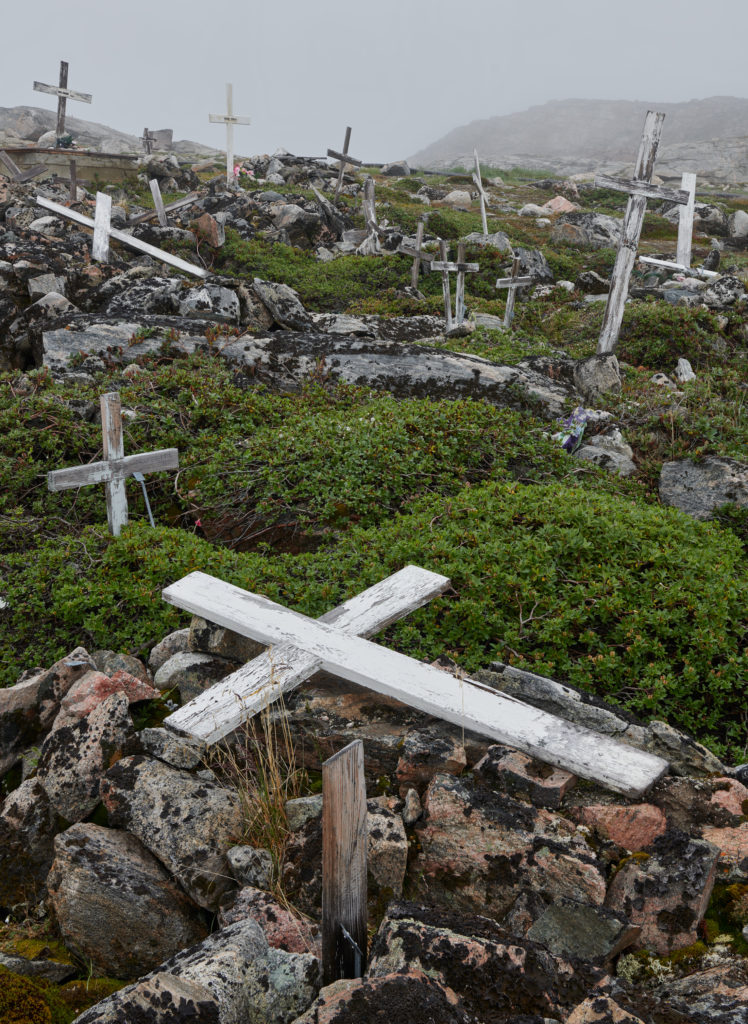
Cemetery: Kollorsuaq, Greenland, 48 mm, f/8, stack of 14 images
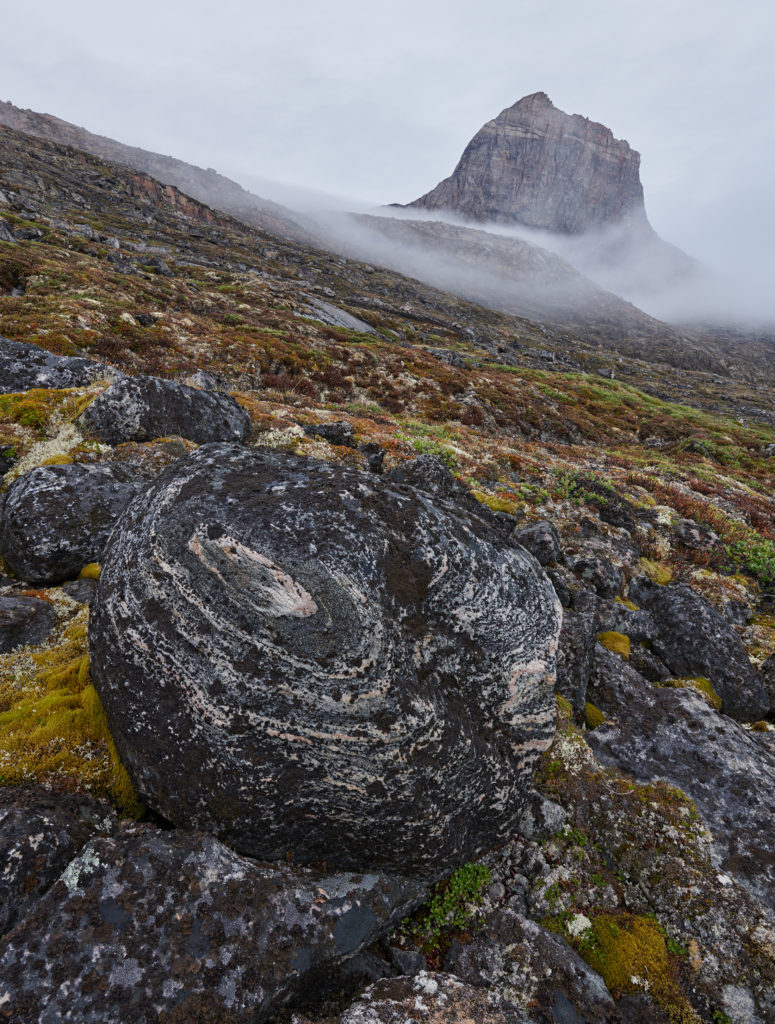
Bolder and “devils thumb”: Kolorsuaq, Greenland, 19 mm, f/5.6 , stack of 8 images
